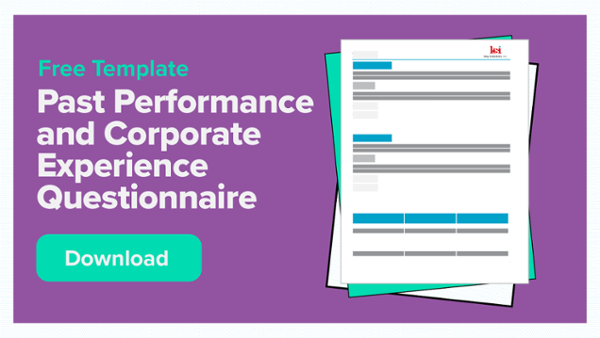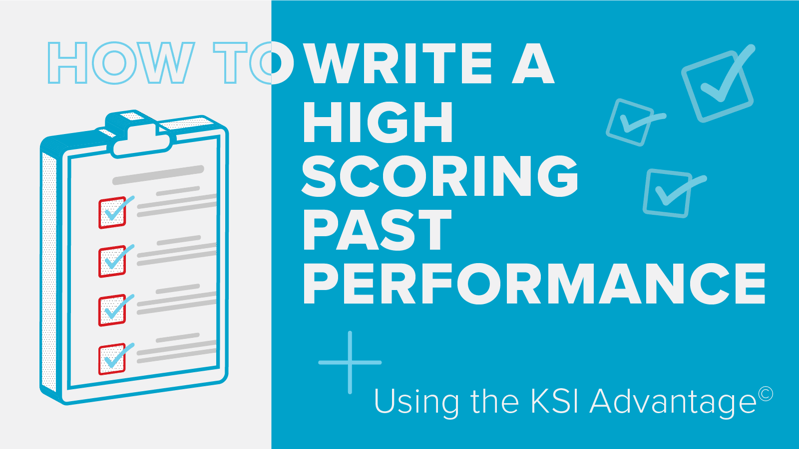
The Past Performance section in a proposal provides evidence of your previous success to your customer by exhibiting your proven ability to deliver a quality product or service in a timely and cost-controlled manner.
Using a collection of past contract achievements that mirror the scope of work of the current RFP, a solid Past Performance has the ability to reassure the government that you have the capacity to effectively perform the sort of work they’re looking for.
The Past Performance section of The KSI Advantage™ Capture & Proposal Guide will surely prove useful because it answers many of the questions you likely already have, such as, how do you issue customer evaluation questionnaires? Or, when given a choice, how do you select the appropriate contracts to include in the section? The Guide also contains several templates unique to KSI that are straightforward and reusable.
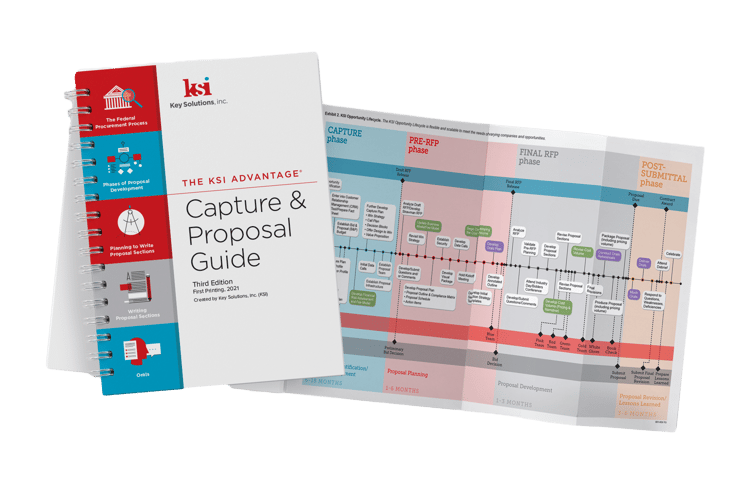 Let’s briefly cover just what the Guide offers regarding Past Performance, one of the most important aspects of any proposal. There are two main ways to try and score high with Past Performance: 1) by receiving high marks on your Contractor Performance Assessment Reports (CPARs) and customer evaluation questionnaires, and 2) by providing an effective Past Performance write-up.
Let’s briefly cover just what the Guide offers regarding Past Performance, one of the most important aspects of any proposal. There are two main ways to try and score high with Past Performance: 1) by receiving high marks on your Contractor Performance Assessment Reports (CPARs) and customer evaluation questionnaires, and 2) by providing an effective Past Performance write-up.
CPARs and Customer Evaluation Questionnaires:
Most of the time, the government will ask that the contracts you use for Past Performance be validated through CPARs or evaluation questionnaires. Many RFPs will include the questionnaires they require. Frequently the customers referenced in your Past Performance simply need to complete the questionnaires and send them back to the government, but to make sure you score well, you will need to do two things:
1. Select Relevant and Successful Contracts:
Oftentimes you won’t be able to include just your highest-ranking projects in your Past Performance. Instead, you will need to feature all of your past contracts within a specified period regardless of success.
Keep in mind that even in situations where you have more freedom to choose, you will still need to include enough past contracts to demonstrate your ability to perform all aspects of the RFP's Scope of Work (SOW). If you find yourself in a position to pick and choose, make certain that the projects you select show successful performance regarding quality, cost control, timeliness, or any other factor that may be important to the client. If your performance was subpar on a contract, don’t include it in your Past Performance unless you absolutely must!
2. Ensure Timely Receipt of Questionnaires:
Sometimes the government will survey your referenced customers themselves. When this doesn’t happen, you will have to either include the completed questionnaires in your proposal or have your referenced customers send them directly to the government.
As seen in the graphic below, when relying on your customers to send their questionnaires, your Past Performance Lead should implement a management process designed to ensure timely delivery. This means sending the questionnaires to the customers along with detailed instructions and methodically tracking their responses or lack thereof. In addition, the Past Performance Volume Manager should regularly check on each questionnaire ahead of the due date and record any progress toward completion in a Past Performance Tracking Form.
A Past Performance Tracking Form is included as Exhibit 4-12 and Appendix-37 in the Guide! *Page locations may differ depending on the Guide edition you have.
Questionnaire Management Process 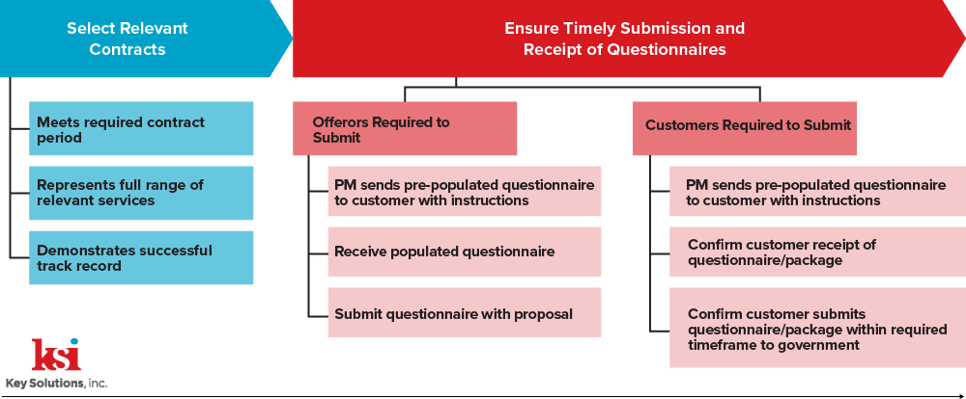
Past Performance Write-Ups:
To begin your write-up, conduct a data call to determine what parts of Sections C, H, J, L, and M need to be represented in your Past Performance. If the RFP permits, Key Solutions also recommends writing a Past Performance introduction to summarize your previous work.
Each of your contract profiles and descriptions should be brief but representative of your experience and ability to fulfill RFP requirements. Use as many keywords from the SOW as possible and follow the order of the SOW in your project descriptions. Make sure that the contracts you've included are comparable in size, scope, and complexity. Key Solutions recommends using a Meatball Chart to demonstrate similarities and organize your Past Performance.
Below you will find an example of a completed Meatball Chart organized to show size, scope, and complexity. This example is also available in the Guide as *Exhibit 4-13 and Appendix-119, and a blank template is ready for you to fill in, also in Appendix-119!
Meatball Chart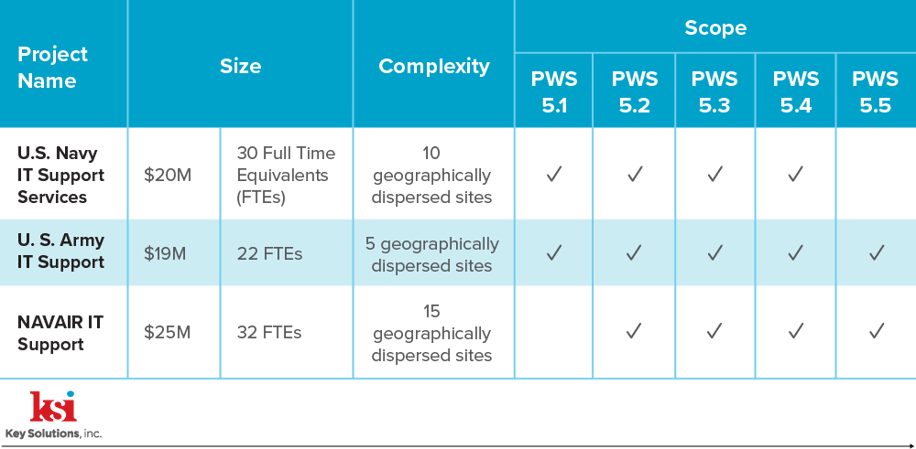
Conclusion
The government is risk-averse. They do not want to award what can sometimes be billions of dollars to a company that cannot handle the work. That is why Past Performance, though often ignored, is so crucial.
For more details on Past Performance and tips and tools that can help you through every stage of federal proposals, check out our KSI Advantage™ Capture & Proposal Guide!



